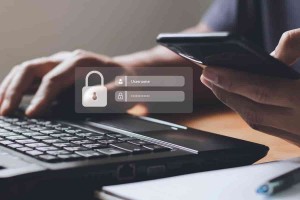4 Steps to Take to Protect Yourself Online

While there are no specific or credible cyber threats to the United States at this time, Russia’s attack on Ukraine, which has involved cyber-attacks on the Ukrainian government and critical infrastructure organizations, may impact organizations both within and beyond the region, particularly in the wake of sanctions imposed by the United States and its allies.
Commonwealth Savers joins other financial organizations —large and small—in being prepared to respond to disruptive cyber activity. The organization has heightened its position when it comes to cybersecurity and protecting its most critical assets — the accounts and personal information of Invest529 customers.
Every individual can also take simple steps to improve their cyber hygiene and protect themselves online. Experts urge everyone to:
- Implement multi-factor authentication on your accounts. Generally, a password isn’t enough to keep you safe online. By implementing a second layer of identification, like a confirmation text message or email, a code from an authentication app, a fingerprint or face ID, you’re giving your bank, email provider, or any other site you’re logging into the confidence that it really is you. According to the Cybersecurity and Infrastructure Security Agency, multi-factor authentication can make you 99 percent less likely to get hacked. So, enable multi-factor authentication on your email, social media, online shopping, and financial services accounts. And don’t forget your gaming and streaming entertainment services. Related: Protect Your Invest529 Account with Multi-factor Authentication
- Update your software. In fact, turn on automatic updates. Update the operating system on your mobile phones, tablets, and laptops. And update your applications – especially the web browsers – on all your devices, too. Leverage automatic updates for all devices, applications, and operating systems.
- Think before you click. More than 90 percent of successful cyber-attacks start with a phishing email. A phishing scheme is when a link or webpage looks legitimate, but it’s a trick designed to have you reveal your passwords, Social Security number, credit card numbers, or other sensitive information. If it’s a link you don’t recognize, trust your instincts, and think before you click. Related: 5 Red Flags of Phishing
- Use strong passwords and, ideally, a password manager to generate and store unique passwords.
Report suspicious or fraudulent activity
Protect Your Invest529 Account with Multi-factor Authentication
Source: “Shield’s Up,” Cybersecurity and Infrastructure Security Agency



